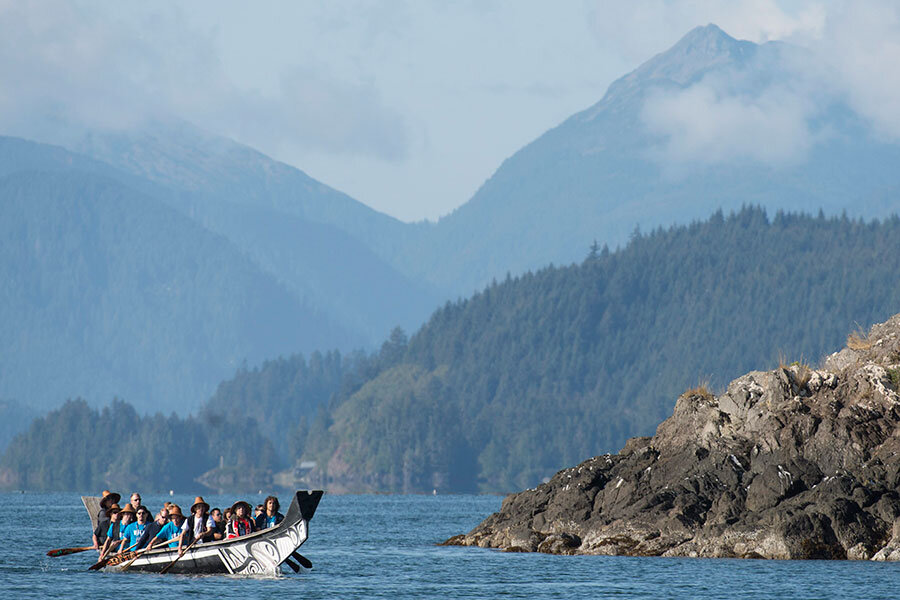Missing 'nuke' found? Underwater find could unlock a cold war mystery.
Loading...
In what could be the final denouement of a military mystery that has persisted for more than half a century, a sea cucumber diver may have found a missing nuclear weapon that was lost during the cold war.
In 1950, American B-36 Bomber 075 took off from an airfield in Alaska and headed towards Carswell Air Force Base in Texas. The plane was on a secret mission to simulate a nuclear strike and thus had a Mark IV nuclear weapon on board to ensure the bomber could handle the hefty payload of a weapon of that size.
However, off the coast of British Columbia, the plane’s engines caught fire, forcing the crew to set a course for the middle of the ocean and then themselves parachute to safety. Of the 17-member crew, five did not survive, and the bomb has been missing since.
"It was a mystery to everyone," Dirk Septer, an aviation historian from British Columbia, told the BBC. "It was the height of the Cold War and they were just paranoid that the Russians would get a hold of it."
The US military says the weapon contained no plutonium, as it was only filled with lead, uranium, and TNT in order to simulate the weight. Still, people have been searching for the device since the plane went down 66 years ago.
Now, Sean Smyrichinsky, a Canadian diver, may have discovered the missing bomb while searching for sea cucumbers. Using a diver propulsion device, Mr. Smyrichinsky had descended to about 25 to 30 feet in the bay off of Pitt Island along the north coast of British Columbia when he stumbled on an unusual object on the ocean floor.
"When I came out of the water, I was pretty excited about the big weird thing that I found," Smyrichinsky said, quoted by The Washington Post. "I drew a picture of the thing that I had found on a napkin with my buddies."
Initially believing he had found a UFO, Smyrichinsky was dismissed both by his friends as well as the other nearby divers and fisherman he approached in an attempt to corroborate his story. When eventually an older man in a local village suggested he had found the lost nuke, Smyrichinsky searched online for images of a Mark IV and believed that the drawings resembled the object he had discovered on his dive.
After finally establishing contact with the Canadian government, Smyrichinsky tagged along with the Canadian Royal Navy to explore the crash site.
Though during the cold war the accidental loss of nuclear weapons generally was kept secret, several known instances took place throughout that period. A BBC correspondent later visited a 1968 crash site near North Greenland where a US bomber went down, losing parts of a nuclear weapon beneath the ice. Some of those parts were recovered by submarines but not all could be found.
Two years prior to the Greenland crash, another bomber went down near Palomares, Spain, losing four weapons, three of which were immediately recovered. The fourth took over two months of searching to be found.
When the B-36 crashed off the coast of British Columbia, the crew members dumped the bomb in the ocean before setting the autopilot to take the plane out into the sea, where the TNT payload couldn't harm anyone if detonated.
A shroud of mystery settled around the incident three years later when the wreckage of the bomber was found on a mountain hundreds of miles inland, according to the BBC.
Smyrichinsky's discovery has brought the story into the light, but the mystery hasn't been solved quite yet. The object beneath the sea has not yet been confirmed to be the missing weapon, and some historians have expressed skepticism.
The lost bomb was likely a dummy capsule, Canadian Armed Forces Major Steve Neta told the Canadian Broadcasting Corporation, so it presents little risk.
"Nonetheless, we do want to be sure and we do want to investigate it further," he told the CBC.






